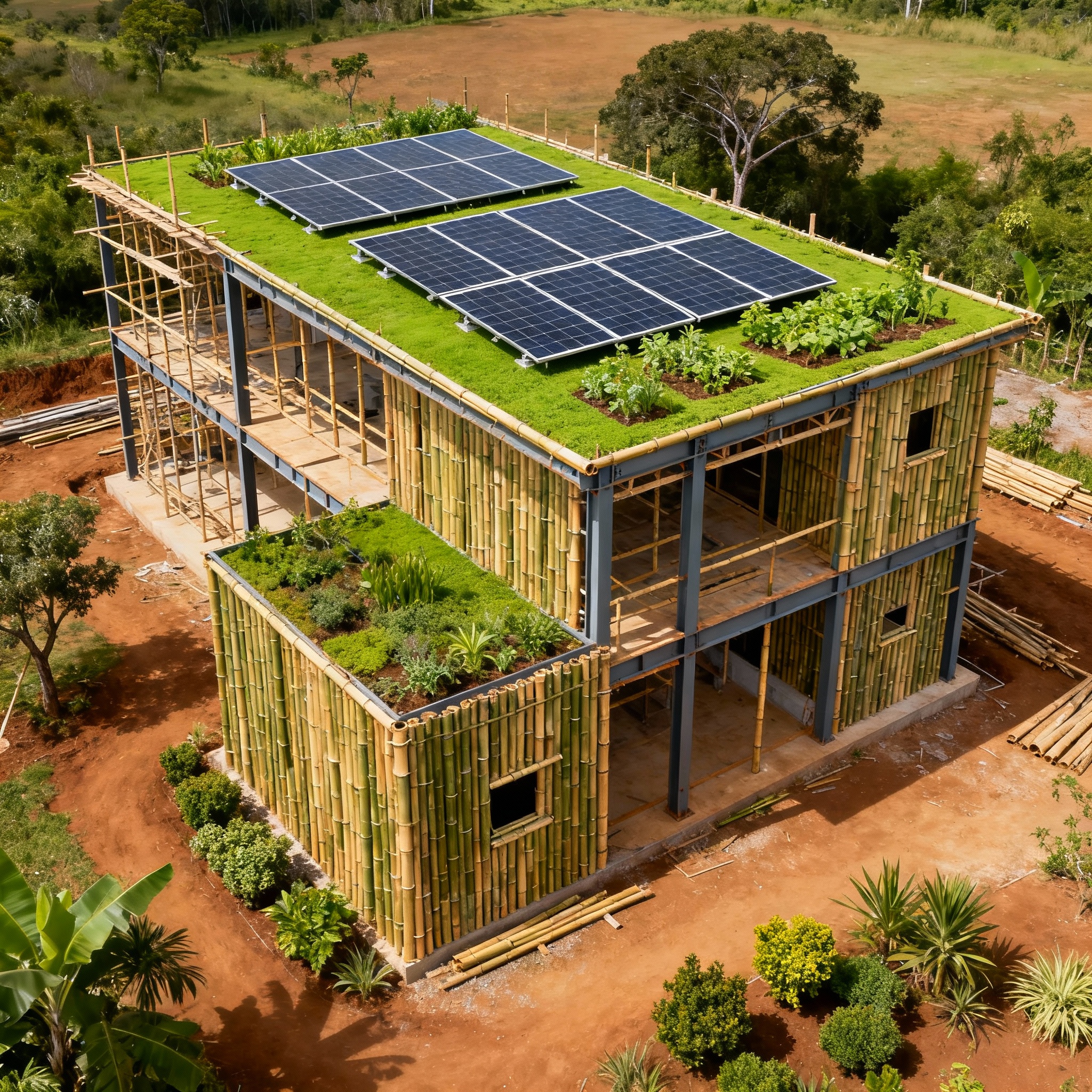
Introduction to Sustainable and Green Building Materials
Construction is no longer just about building strong and beautiful structures—it’s about building responsibly. With rising concerns about climate change, sustainable and green building materials have become a vital part of modern architecture.
Why Sustainability Matters in Construction
Think about it: traditional construction methods often consume enormous amounts of resources, release greenhouse gases, and generate waste. By switching to eco-friendly alternatives, we’re not just saving money—we’re also saving the planet for future generations.
The Rise of Eco-Friendly Building Practices
From skyscrapers to small homes, architects and builders worldwide are adopting eco-friendly methods. The demand for energy-efficient homes and green certifications has skyrocketed, making sustainability more than just a trend—it’s the future.
What Are Green Building Materials?
Definition and Key Features
Green building materials are products that have minimal impact on the environment, both during production and throughout their lifecycle. They are energy-efficient, non-toxic, recyclable, and durable.
Difference Between Conventional and Green Materials
Conventional materials like cement, steel, and plastic may be strong, but they leave a heavy carbon footprint. Green materials, on the other hand, focus on renewable sources, recyclability, and reducing energy consumption.
Importance of Eco-Friendly Materials in Construction
Reducing Carbon Footprint
Using low-carbon materials like bamboo and hempcrete reduces greenhouse gas emissions significantly.
Conserving Natural Resources
Recycled steel, reclaimed wood, and fly ash concrete help minimize waste and reduce the need for new raw materials.
Long-Term Cost Benefits
While eco-friendly materials may cost a little more upfront, they save homeowners money in the long run through energy efficiency and durability.
Popular Sustainable Building Materials
Bamboo – The Fast-Growing Alternative
Bamboo grows quickly, is strong, and can replace timber in many construction applications.
Recycled Steel and Metal
Steel can be reused without losing strength, making it a top choice for eco-conscious builders.
Fly Ash Concrete
A byproduct of coal combustion, fly ash adds strength to concrete while reducing waste.
Reclaimed Wood
Old wood is not only durable but also gives a rustic charm to homes.
Hempcrete
Made from hemp fibers, hempcrete is lightweight, strong, and provides excellent insulation.
Low-VOC Paints and Finishes
Traditional paints release harmful chemicals, but low-VOC paints ensure a healthier indoor environment.
Innovative Eco-Friendly Materials Emerging in the Market
Mycelium (Mushroom-Based Bricks)
Yes, you read that right—mushrooms are being grown into durable bricks! They’re lightweight, biodegradable, and strong.
Green Insulation Materials
Recycled denim, sheep wool, and cellulose provide eco-friendly insulation alternatives.
Transparent Solar Panels
These innovative panels can be used as windows while generating clean energy.
How Green Materials Are Changing Construction in India
Current Trends in Indian Real Estate
With urbanization at its peak, India’s construction industry is embracing eco-friendly solutions to meet sustainability goals.
Government Regulations and Incentives
Initiatives like GRIHA and IGBC certifications are pushing builders towards sustainable practices.
Growing Awareness Among Buyers
Modern homebuyers in cities like Varanasi are asking for energy-efficient homes, healthier materials, and eco-conscious designs.
Benefits of Using Sustainable Materials for Homeowners
Energy Efficiency and Reduced Bills
Green buildings use less energy for heating and cooling, cutting electricity costs.
Healthier Indoor Environment
Non-toxic paints, proper ventilation, and natural materials improve indoor air quality.
Increased Property Value
Eco-friendly homes are in demand and fetch higher resale values.
Challenges in Adopting Green Building Materials
Higher Initial Costs
Some sustainable materials cost more upfront, making people hesitant.
Lack of Awareness
Many buyers and builders are still unaware of the benefits of green construction.
Limited Availability in Some Regions
Certain eco-friendly products aren’t widely available in smaller towns yet.
Future of Green Building Materials
Role of Technology and Innovation
3D printing, nanotechnology, and AI are transforming the way sustainable materials are created and used.
Predictions for the Next Decade
Expect to see smart homes built with recycled materials, self-healing concrete, and energy-generating walls becoming the norm.
Conclusion
Sustainable and green building materials are no longer optional—they’re essential. They protect our planet, improve our quality of life, and make homes more valuable. As eco-consciousness grows, the construction industry is bound to transform completely. If you’re planning a home in Varanasi, adopting green materials isn’t just smart—it’s the future.
For sustainable construction and eco-friendly real estate solutions, visit Singhaab Builders.
FAQs
Q1: What are the most affordable green building materials?
Bamboo, fly ash concrete, and recycled steel are among the most cost-effective options.
Q2: How do eco-friendly materials improve air quality?
Low-VOC paints and natural materials reduce indoor toxins, making the air safer to breathe.
Q3: Can sustainable materials be used for large-scale projects?
Yes! From skyscrapers to housing projects, eco-friendly materials are being used worldwide.
Q4: Do green materials last longer than traditional ones?
Many green materials, like bamboo and recycled steel, are as durable—or even stronger—than traditional options.
Q5: Where can I find eco-friendly construction services in Varanasi?
You can connect with Singhaab Builders for sustainable and innovative construction solutions.
